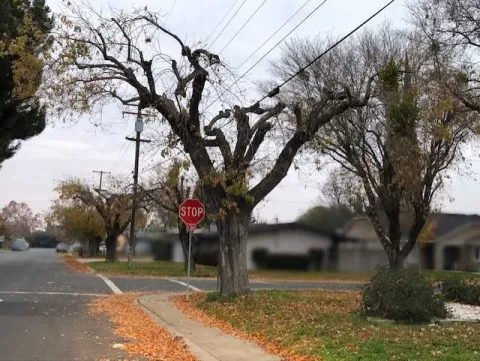Have you ever seen a tree that looks like it got a bad haircut? Or was just plain unattractive? Chances are this tree was pruned incorrectly using a practice called topping. Topping is the harmful practice of cutting tree branches to stubs, causing the resulting growth to become bushier and more susceptible to breakage during storms.

In winter, the results of tree topping are easier to see. Instead of topping, consider the form of the tree and picture how you want it to look when you are finished. Here are a few things to know before you start:
- Pruning cuts create a new direction for a tree to grow.
- There are three types of pruning cuts—a thinning or reduction cut, a removal cut, and a heading cut. Each is distinctly different and is used to accomplish unique objectives
- If you prune correctly, you can “train” a young tree into an attractive form.
- Pruning to establish a strong and attractive form is best done during the first 3-5 years of a tree's life.
- Reducing the size of a large tree can be done but is usually best done by an ISA certified arborist.
- Incorrectly pruning certain fruit trees can result in trees that don't bear fruit!
Here are some resources that describe the best methods to prune landscape trees and fruit trees.
Landscape Trees
Training young trees
Thin, don't top mature trees
Pruning landscape trees
Fruit Trees
The California Backyard Orchard website lists fruit trees by species and includes pruning tips for both deciduous and evergreen fruit trees.

